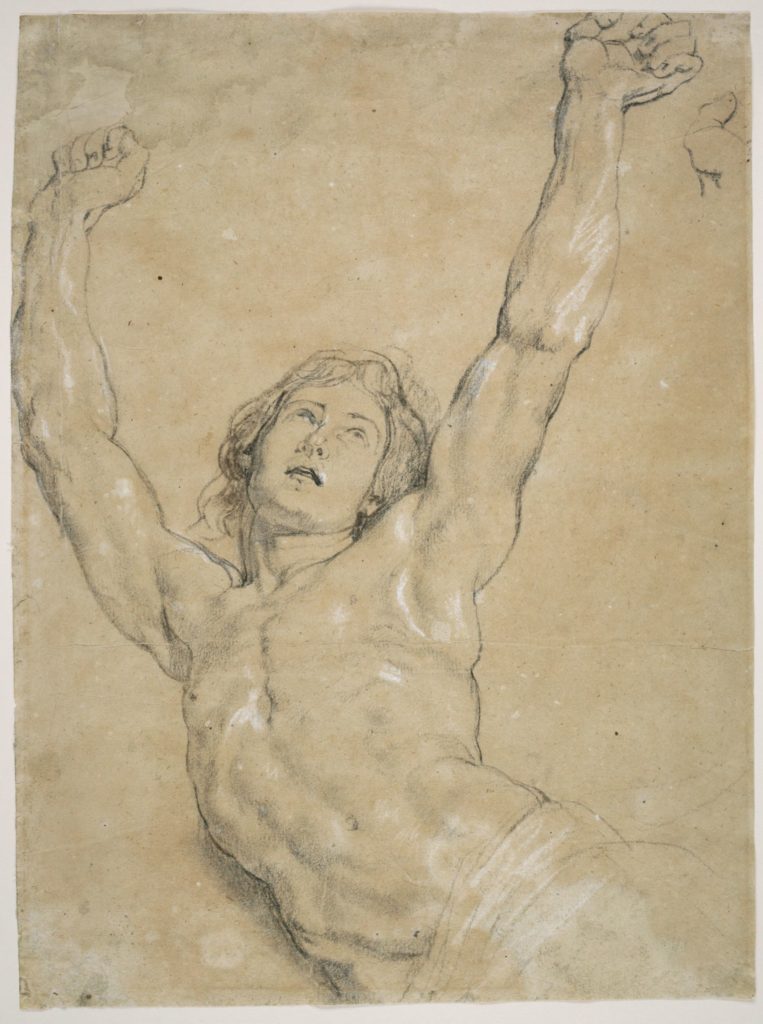Drawing Insights: The Renderings of Peter Paul Rubens
Dutch artist Peter Paul Rubens is renowned for many aspects of his career, but when we at Nitram Charcoal hear his name, we think of his draftsmanship. Beyond his unique approach to the figure – most of us have heard reference to his "Rubenseque" forms – Ruben's drawings reveal the remarkable skill of the artist, his absorption of classical ideals, and his passion for Baroque intensity.

Bust of Pseudo-Seneca, 1600-1626. Pen and brown ink over black chalk Metropolitan Museum of Art, New York.
Born outside Cologne, Germany, in 1577, Rubens moved with his family to Antwerp early in his second decade. It was there that Rubens' artistic training began, and his inherent talent allowed him to excel quickly. Near the turn of the century, Rubens traveled to Rome to envelope himself in the artistic energy of the classical world, a visit that would transform his style from earlier Northern Renaissance rigidity to Baroque intensity and fluidity. By 1610, Rubens had returned to Antwerp and established his own workshop, which would grow over the subsequent decades to become one of the most popular and prolific in all of Europe.

A Study for Christ for "The Elevation of the Cross," 1610-1611. Black and white chalk and charcoal on light gay antique paper Harvard Art Museums, Cambridge, Massachusetts.
Underpinning this extensive practice, though, was the spirit of design that is visible in the substantial compendium of Rubens' surviving drawings. Channeling a remarkably varied range of themes and narratives, Rubens nevertheless expressed through them all an unyielding emphasis on the drawn image. Figural studies and preparatory compositions were lavished with the same level of detail as one would expect from a finished composition, revealing Rubens' immense talent in rendering complex and compelling works. This level of finesse was also a means by which Rubens could relay his concepts to his bevy of workshop assistants. By working in step with his rising recruits, Rubens could effectively train his workshop members while also encouraging their pursuit of their own technical genius.

Study of a Man, c. 1617-1618. Victoria and Albert Museum, London.
What is perhaps most fascinating with Rubens' drawings is that they give the viewer a snapshot into the artist's mind. In many of his drawings, highly finished portions, replete with subtle shading and delicate contours, are paired with more roughly sketched parts and gestural outlines. These juxtaposed zones offer the viewer an intimate insight into Rubens' design process, as if we can sense what aspects of the composition were most captivating – or perhaps most challenging – for him. From this perspective, Rubens' drawings offer a documentary history of his design abilities, and it is perhaps for this reason that his works on paper are as equally cherished as his larger oil compositions.

The Assumption of the Virgin, c. 1624 (rendered with the assistance of Paulus Pontius) Black Chalk/Mixed Media. The J. Paul Getty Museum, Los Angeles.
Are you a fan of Rubens? Enjoyed a recent exhibition of his works? What is your favorite Rubens work? Tell us about it!
